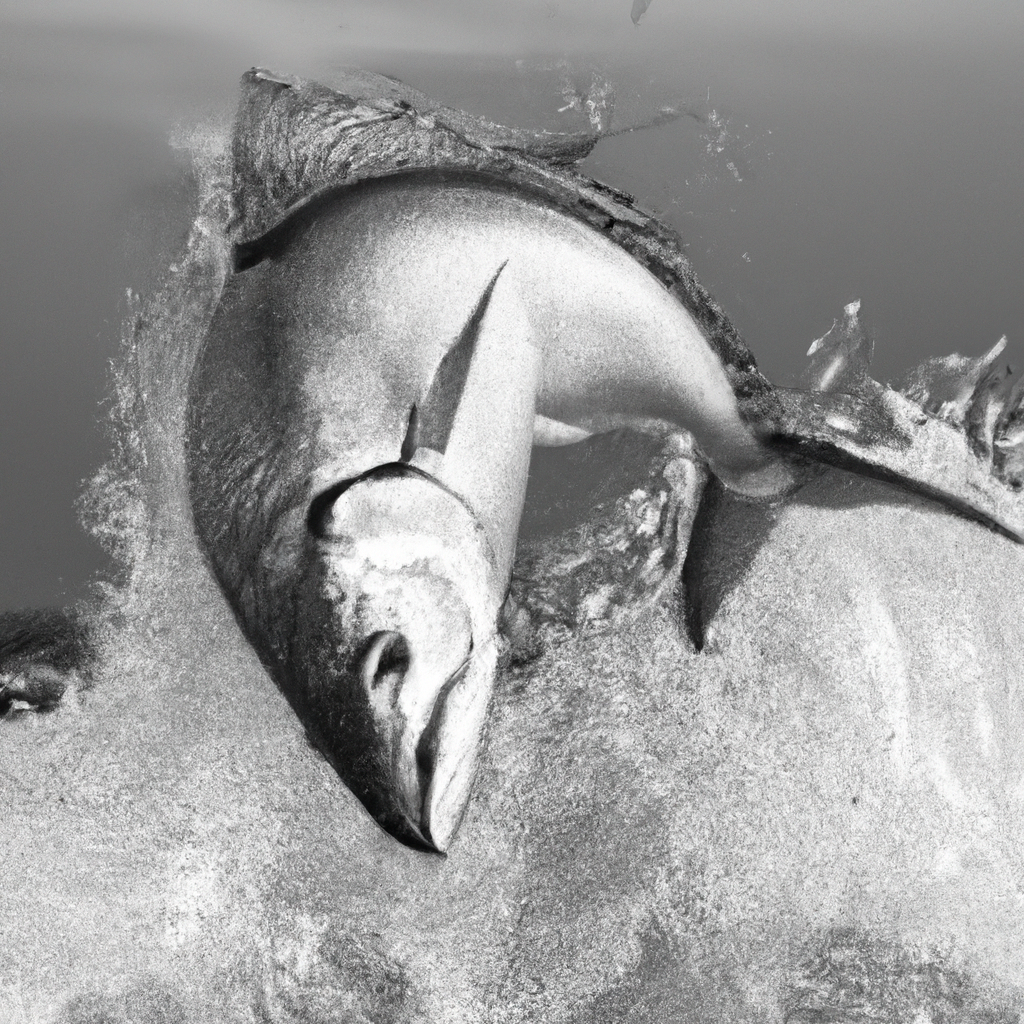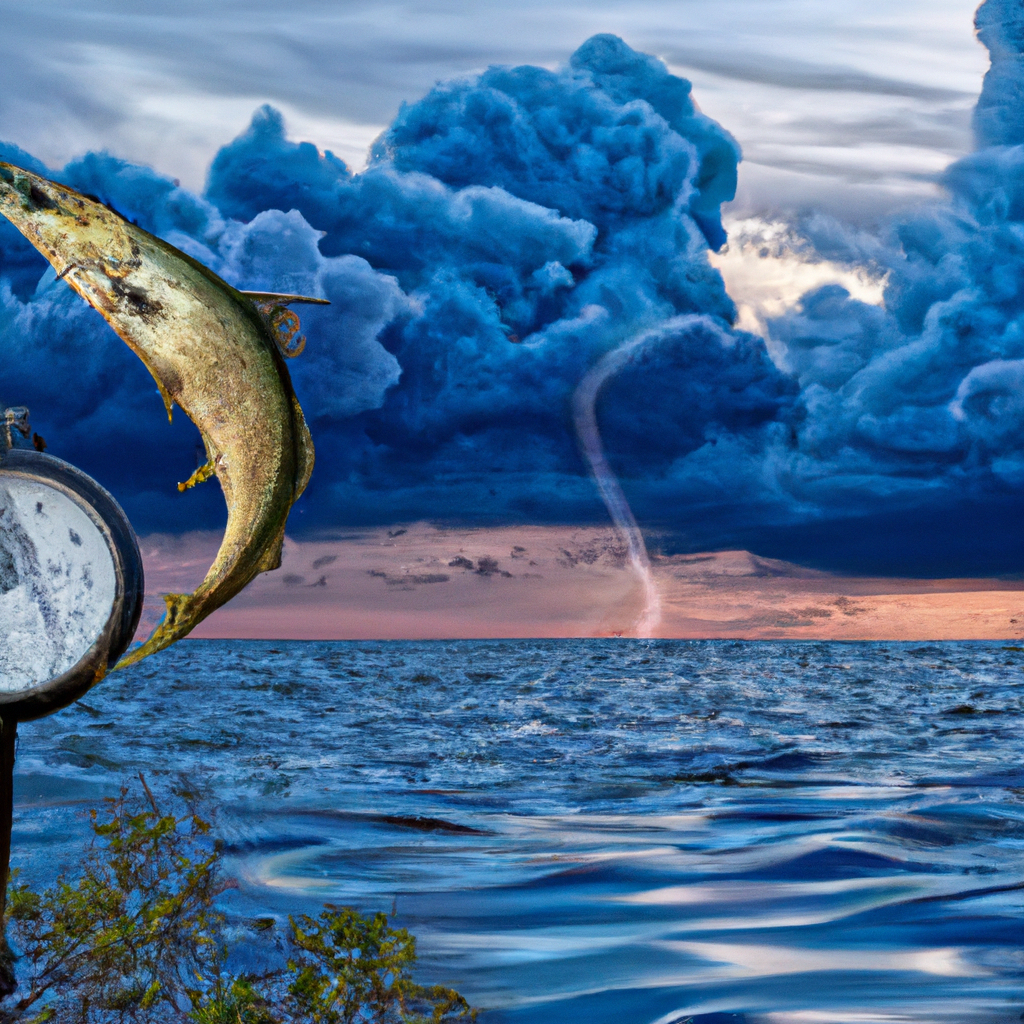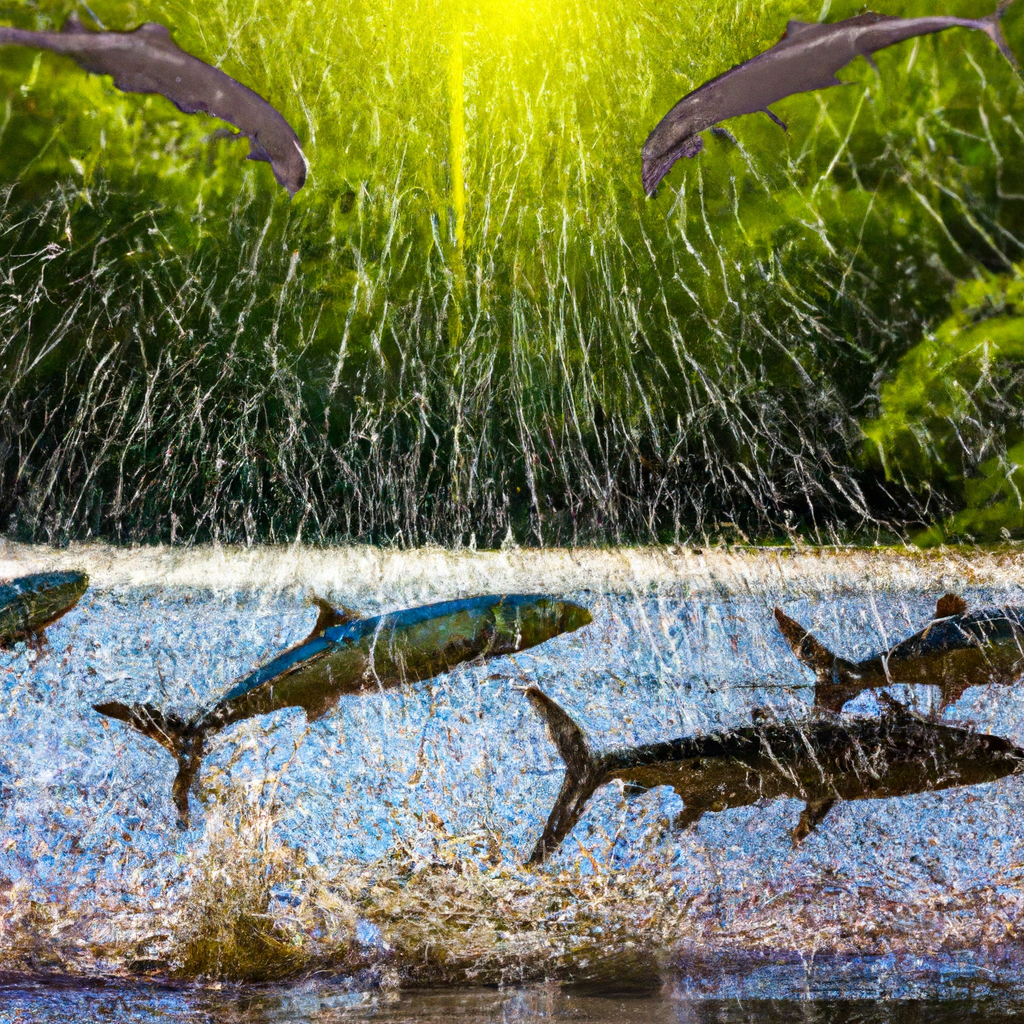Are you ready to unlock the secrets of successful tarpon fishing?
Discover the crucial role that weather plays in your pursuit. From the behavior of these mighty fish to the patterns of wind, temperature, and barometric pressure, understanding the elements is key.
Dive into the impact of rainfall on water clarity and the feeding habits of tarpon.
With this knowledge, you’ll be equipped to navigate the ever-changing conditions and increase your chances of reeling in the trophy catch of a lifetime.
Tarpon Behavior and Weather Patterns

You’ll find that tarpon behavior is greatly influenced by weather patterns. Understanding how weather impacts tarpon migratory patterns, tidal currents, and tarpon feeding can significantly enhance your chances of successful fishing.
Tarpon are highly migratory fish, traveling long distances in search of food and suitable breeding grounds. Weather conditions such as wind direction, temperature, and barometric pressure play a crucial role in determining their movements. Tarpon are particularly sensitive to changes in water temperature, and they tend to follow warmer currents.
Tidal currents also influence their feeding behavior, as they’re more active during incoming tides when prey is flushed into their feeding zones. By studying weather patterns and understanding their impact on tarpon behavior, you can strategically plan your fishing trips and increase your chances of a rewarding catch.
Impact of Temperature on Tarpon Feeding
To maximize your chances of success, it’s important to understand how temperature and tarpon feeding are closely interconnected. The impact of temperature on tarpon feeding is significant, as it directly affects their metabolism and behavior. Here are four key points to consider:
-
Tarpon Metabolism: Tarpon are ectothermic, which means their body temperature is regulated by the surrounding environment. As water temperature increases, so does their metabolic rate, leading to increased energy requirements and feeding activity.
-
Seasonal Temperature Variations: Tarpon feeding patterns are influenced by seasonal temperature changes. During warmer months, when water temperatures rise, tarpon become more active and their feeding behavior intensifies.
-
Water Temperature Preferences: Tarpon have specific temperature preferences for feeding. They tend to be more active and feed more aggressively when water temperatures range between 75°F to 85°F (24°C to 29°C).
-
Thermoclines: Understanding thermoclines, which are temperature gradients within the water column, is crucial. Tarpon often seek out thermoclines as they provide optimal temperatures for feeding and conserve energy.
Wind and Its Influence on Tarpon Movement

One important factor to consider is how wind can greatly impact the movement of tarpon. Wind speed plays a crucial role in determining the behavior of these fish. When the wind is calm, tarpon tend to stay close to the surface, making them more accessible to anglers. However, when the wind picks up, tarpon may move deeper into the water column to seek shelter from the disturbance at the surface. This can make it more challenging to locate and target them. Additionally, wind direction can influence the movement patterns of tarpon. They are known to swim against the wind, utilizing the push of the water created by the wind to aid their movement. Furthermore, wind-induced tidal currents can affect the distribution of tarpon, causing them to congregate in certain areas where the currents are stronger. Therefore, understanding wind conditions is crucial for successful tarpon fishing.
| Wind Speed (mph) | Tarpon Movement |
|---|---|
| 0-5 | Close to surface, more accessible to anglers |
| 5-10 | May move deeper into the water column for shelter |
| 10+ | Challenging to locate and target |
Understanding Barometric Pressure and Tarpon Activity

When the barometric pressure drops, tarpon tend to become more active and are more likely to feed. This is because changes in barometric pressure can affect the behavior of fish, including tarpon. Here are four key points to help you understand the relationship between barometric pressure and tarpon activity:
-
Effect of Tides on Tarpon Activity: Tarpon are known to be more active during incoming tides. When the barometric pressure drops, it can enhance the effect of the tides, leading to increased tarpon activity and feeding.
-
Correlation between Moon Phases and Tarpon Feeding: The moon plays a significant role in tarpon feeding patterns. During certain moon phases, such as the full moon or new moon, tarpon tend to be more active and feed more aggressively. When combined with a drop in barometric pressure, this can create optimal fishing conditions.
-
Barometric Pressure and Tarpon Behavior: Tarpon have a keen sense of barometric pressure changes. When the pressure drops, it signals a change in weather conditions, which can trigger tarpon to feed more actively. This is why many anglers consider low-pressure systems or approaching storms as ideal times to target tarpon.
-
Using Barometric Pressure as a Fishing Indicator: By monitoring barometric pressure trends, anglers can predict tarpon activity and plan their fishing trips accordingly. A sharp drop in barometric pressure indicates a good opportunity to catch tarpon, as they’re likely to be more active and feeding.
Understanding the relationship between barometric pressure and tarpon activity can significantly improve your chances of a successful fishing trip. Keep an eye on the pressure trends, factor in the effect of tides and moon phases, and you’ll be well on your way to hooking into some trophy tarpon.
Rainfall and Water Clarity: Key Factors in Tarpon Fishing Success

Keep an eye on the rainfall and water clarity as they play a crucial role in your tarpon fishing success. Rainfall affects water clarity, and tarpon tend to be more active and feed more aggressively in clear water. When there’s heavy rainfall, runoff from the land can cause the water to become murky and decrease visibility for the fish. This can make it more challenging to entice tarpon to bite.
Additionally, water clarity is also affected by tides. During high tides, water can become turbid due to the movement of sediment and debris. On the other hand, low tides can result in clearer water as sediment settles.
Moon phases also influence tarpon activity, with the fish being more active during the new and full moon phases. By paying attention to rainfall, water clarity, tides, and moon phases, you can increase your chances of success in tarpon fishing.
Frequently Asked Questions
What Are the Best Lures or Bait to Use When Tarpon Fishing?
To have success tarpon fishing, it’s important to know the best techniques for casting lures or bait. The most effective types of lures or bait for catching tarpon vary depending on the conditions and location.
Are There Specific Times of the Day When Tarpon Are More Active?
During the day, tarpon tend to be most active when the weather conditions are favorable, such as warm water temperatures, calm winds, and clear skies. These specific conditions can help you choose the best fishing spots for tarpon.
What Are Some Common Mistakes to Avoid When Tarpon Fishing?
When tarpon fishing, avoid common mistakes like using the wrong equipment or not understanding their behavior and feeding patterns. Instead, focus on techniques to improve success, such as using proper bait and timing your casts.
How Long Does It Typically Take to Catch a Tarpon?
When tarpon fishing, the time it takes to catch one depends on various factors such as the angler’s skill level, the fishing location, and the size of the tarpon. Employing effective tarpon fishing techniques and applying tips for landing a tarpon quickly can help expedite the process.
Are There Any Specific Areas or Regions That Are Known for Better Tarpon Fishing Opportunities?
You’re asking about the best places for tarpon fishing. Well, let’s dive into the world of tarpon fishing hotspots and techniques. From the Florida Keys to Costa Rica, there are plenty of prime locations to reel in these magnificent fish.

